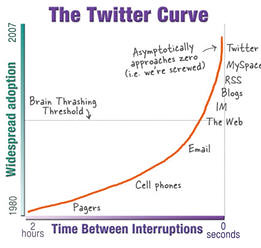
There are a few possible interpretations of Development 2.0 that make it more than jargon. Two are simple (although not easy) and most likely inevitable. The last one is very, very hard. And, of course, it’s the one that matters most.
The first meaning of Development 2.0 would be using new technology and methods to share information and improve practice. Use new technology to improve the quality of the work we do. This includes both using new technology to solve development problems, and to share information across communities of practice. It could mean a better kind of water pump, it could mean Ushahidi, or it could mean posting your trip reports to YouTube. Other examples include Aidworkers Network, Appropedia, networklearning.org, and uncultured.com. Not to mention the growing community of international development blogs and twitter accounts.
I think this kind of Development 2.0 will occur naturally. Development organizations are full of people who care about their work and seek ways to do it better. Early adopters will grab useful new tech as it occurs, and sooner or later institutional resistance will be overcome.
Another form of Development 2.0 would be using the social web to crowd-source funding for development projects. We saw the Obama campaign route around traditional donor dominance by getting hundreds of thousands of small donations instead of relying on a few major funders. We could do the same thing in development. This would mean a greater diversity in what projects get funded, and fewer irrational restrictions on money. This would mean that no one had the power to impose a global gag rule, for example, or force a project to procure all their mobile phones from Finland.
The truest, most difficult form of Development 2.0, however, is more than improving our current work. Instead, it will mean going from a donor model to a partnership model. The web 2.0 revolution was when people went from being passive consumers of pre-packaged information and entertainment to creating their own content and sharing it with each other using new tools. It shattered traditional media structures in ways we are still trying to understand.
If we could do that in development, it would be genuinely earth-shaking. What if developing countries went from being passive recipients of aid packages to identifying their own needs and developing their own solutions, reaching out to donors to provide funding and targeted expertise as requested? What if they shared those solutions with other countries in the same situation? Countries who have seen success in bringing down HIV rates could offer technical expertise to those still struggling. New technologies make information sharing and analysis easier than ever. They are not the exclusive province of the developed world.
Web 2.0 still relies on traditional media to provide content to be discussed, contextualized, and remixed. Perhaps in Development 2.0 donors would do deep technical research to support good program design, and monitor and evaluate programs to support the best possible uses of donor money.
Thanks to JamesBT, Bjelkeman, carolARC, waugaman, stevebridger, and Will Schmitt for helping me refine my ideas on this.
********
(photocredit: Ed Yourdon)
Chosen because I have a deep and abiding love for Al Gore.


